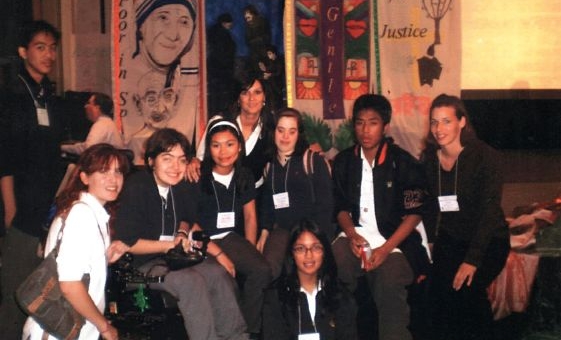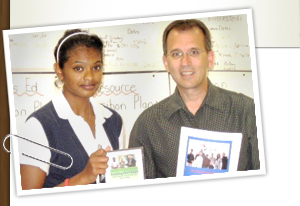Keys to Promoting Inclusion
There are things you can do to nip exclusion in the bud in your classroom. One is to talk about disability in a way that normalizes it. Then, lead by example. Teach social skills as you go along.

Practising Inclusion in a Leadership Class
In my senior high Leadership class, I include students from Grades 10, 11 and 12. I generally have one or two students who have an intellectual disability in this class. The range in grade levels and abilities is an important aspect of the Leadership learning that takes place. Students work in groups of 7 or 8. Among other activities, the students plan school events such as an International Day and fundraising for Sick Kids Hospital. These are fun activities that call out our students’ creativity and capacity to work together. I have noticed that when the educational assistants accompany their students in the groups, the other students do not address the student with a disability directly but wait for the EA to facilitate his or her involvement. For this reason, the EA’s do other tasks during the Leadership class and I ask the students in the group specifically to include the student with a disability. Usually, I name one student to ensure this happens. This has proven to be a good way for students with and without a disability to actually meet and get to know each other.
Bonita Latchman, Teacher, (back centre) with students and EA, TCDSB, Toronto, ON
The Belonging Collection is intended to make inclusion work in the school environment. The kit contains both the PlayFair Teams material and the L’Arche DVD, “Choosing Our Future: Jean Vanier in Conversation with Secondary School Students.”
This Nova Scotia Department of Education list may be helpful in assessing the way inclusion is being implemented a school.

Peer Mentoring Leads to Understanding and a Career
In high school I took a peer mentoring course that strongly impacted my life. Through this simple but powerful program I developed friendships with wonderful peers whom I probably wouldn’t otherwise have had the opportunity to come to know. Some of my new friends were people who had been diagnosed with autism and various learning disabilities. As part of my duties in their classrooms I helped with the training for the high school Special Olympics. I also helped my peers one-on-one with their school work and I shared fun moments of play with them. The more I got to know these students the more I came to understand how separate their high school experience was from that of other students. I learned that they were sometimes called names, laughed at, often misunderstood and worst of all – ignored. Through this course I earned more than a credit. It brought me to my calling of working as an Educational Assistant alongside people with intellectual disabilities.
EA, ON


